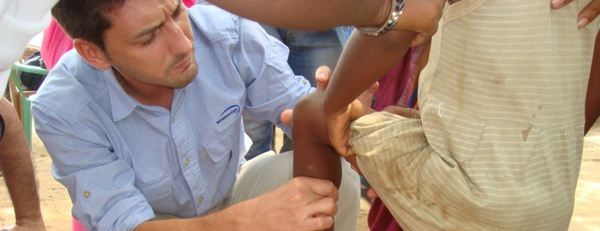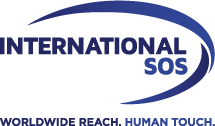The Lancet: WHO strategy insufficient to eradicate yaws, study suggests
Sydney
Antibiotic resistance in yaws bacteria confirmed for the first time
In 2012, WHO began rolling its strategy to eradicate yaws—a bacterial disease of the skin, bones, and joints that has re-emerged over the past 20 years in tropical parts of Africa, Asia, and South America. However, new research published in The Lancet, challenges the long-term efficacy of this approach, revealing that it has failed to achieve elimination in a high-endemic community in Papua New Guinea over 42 months.

The findings also provide the first evidence of emerging drug-resistance, with bacteria resistant to azithromycin, the first-line antibiotic for yaws treatment.
In the study, elimination efforts were hampered by the relapse of untreated latent infections (where bacteria are present but do not show noticeable symptoms) in individuals who were absent at the time of mass treatment, and to a lesser extent, by the re-introduction of yaws cases from in-migration.
“Our findings highlight the importance of treating every person in a community to be sure of targeting all latent infections. Doing multiple rounds of mass treatment may be necessary to eliminate yaws”, says lead author Dr Oriol Mitjá from the International SOS Lihir Medical Centre, Lihir Island, in Papua New Guinea. [4]
Yaws is caused by the bacterium Treponema pallidum, closely related to the one that causes syphilis. It is spread by direct contact with minor injuries (i.e., cuts, scratches) on the skin and afflicts mostly children. It initially causes skin lesions, but if left untreated, can become a chronic, relapsing disease that leads to severe deforming bone lesions. Today, about 89 million people are living in endemic regions.
A previous attempt at eradication between 1954 and 1964 was unsuccessful. During this time, WHO and UNICEF treated 50 million active cases and contacts in 46 countries with penicillin. However, in untargeted latent cases the infection was able to recur and the disease gradually re-emerged in the 1970s.
WHO’s strategy to eradicate yaws by 2020 involves a single round of mass treatment with the inexpensive antibiotic azithromycin followed by targeted treatment programmes comprising active case detection every 3–6 months to identify and treat all symptomatic cases and their contacts.
This new study builds on previous research which showed that large-scale administration of one oral dose of azithromycin to almost 84% (13,490) of 16,092 residents of Lihir Island in Papua New Guinea (whether thought to be infected or not) dramatically reduced yaws prevalence from 2.4% to 0.3% within 6 months. [1] This low prevalence remained unchanged a year after mass treatment. [2]
In this new analysis, all residents of this island community were followed for an additional 30 months (up to 3.5 years after initial treatment) between April 2013 and October 2016. Every 6 months, molecular testing was used to detect Treponema pallidum to confirm the prevalence of active disease and to monitor the emergence of resistance to azithromycin. The researchers also used genotyping to differentiate between indigenous and imported cases.
Following mass administration of antibiotics (coverage rate 84%) and targeted treatment programmes, active yaws prevalence fell from 1.8% before mass treatment to a low of 0.1% after 18 months. [3] But after 2 years, the infection began to re-emerge, rising to 0.4% at 42 months.
In children aged 1 to 5 years old, a sustained drop in seroprevalence—the level of the pathogen identified in the population (latent yaws)—following mass treatment, and in genetic diversity of yaws strains (between 24 and 42 months) was noted, indicating an overall drop in transmission.
At each 6-month survey, more than 60% of the total burden of yaws was found in individuals who were not at mass treatment. Migrants and residents who travelled to other endemic areas after mass treatment made up less than 28% of cases at each survey.
Importantly, researchers recorded five cases of azithromycin-resistant yaws harbouring the macrolide-resistant A2059G mutation. All five children lived in the same village and were related to, or friends with, the first (index) case, suggesting that they had all been infected with a single macrolide-resistant strain.
According to Dr Mitjá, “Our findings suggest that a single round of mass treatment with azithromycin is insufficient to eradicate yaws. What’s more, for the first time, clinically significant resistance to azithromycin has developed in yaws bacteria as a result of the eradication programme. To speed up global eradication efforts, the WHO strategy needs to be adapted to achieve coverage rates of higher than 90%; incorporate repeated rounds of mass treatment; treat a much broader geographical area; and improve drug resistance monitoring to prevent the spread of antibiotic-resistant strains.” [4]
The authors note that the findings of the study may not necessarily be generalizable to other highly-endemic countries with different environmental and cultural characteristics. For instance, in communities bordering areas where the disease is endemic, there are likely to be higher numbers of imported yaws cases than the isolated island community studied as part of this analysis.
Media Contact
For interviews with article author Dr Oriol Mitjá, International SOS Lihir Medical Centre, Lihir Island, Papua New Guinea please contact:
Claire Antczak, Marketing Executive, International SOS
E) claire.antczak@internationalsos.com
T) +61 (0)437 648 011
Notes to Editors
This study was funded by ISDIN laboratories, Newcrest Mining Limited, and US Public Health Service National Institutes of Health
[1] The number of yaws cases in the entire population was estimated using the proportion of PCR-positive specimens amongst a subset of PCR-tested lesions multiplied by the total number of detected lesions (table 1).
[2] Mass treatment with single-dose azithromycin (NEJM 2015) http://www.nejm.org/doi/full/10.1056/NEJMoa1408586
[3] In the 12 month to 24 month surveys, all active yaws lesions were swabbed to detect PCR-positivespecimens in order to provide a direct measurement of the number of yaws cases in the entire population.
[4] Quotes direct from author and cannot be found in text of Article.
About the International SOS Group of Companies
The International SOS Group of Companies is in the business of saving lives, protecting your global workforce from health and security threats. Wherever you are, we deliver customised health, security risk management and wellbeing solutions to fuel your growth and productivity. In the event of extreme weather, an epidemic or a security incident, we provide an immediate response providing peace of mind. Our innovative technology and medical and security expertise focus on prevention, offering real-time, actionable insights and on-the-ground quality delivery. We help protect your people, your organisation's reputation, as well as support your compliance reporting needs. By partnering with us, organisations can fulfil their Duty of Care responsibilities, while empowering business resilience, continuity and sustainability.
Founded in 1985, the International SOS Group, headquartered in London & Singapore, is trusted by 12,000 organisations, including the majority of the Fortune 500, as well as mid-size enterprises, governments, educational institutions and NGOs. 12,000 multicultural medical, security and logistics experts stand with you to provide support & assistance from over 1,000 locations in 90 countries, 24/7, 365 days.
To protect your workforce, we are at your fingertips: www.internationalsos.com


